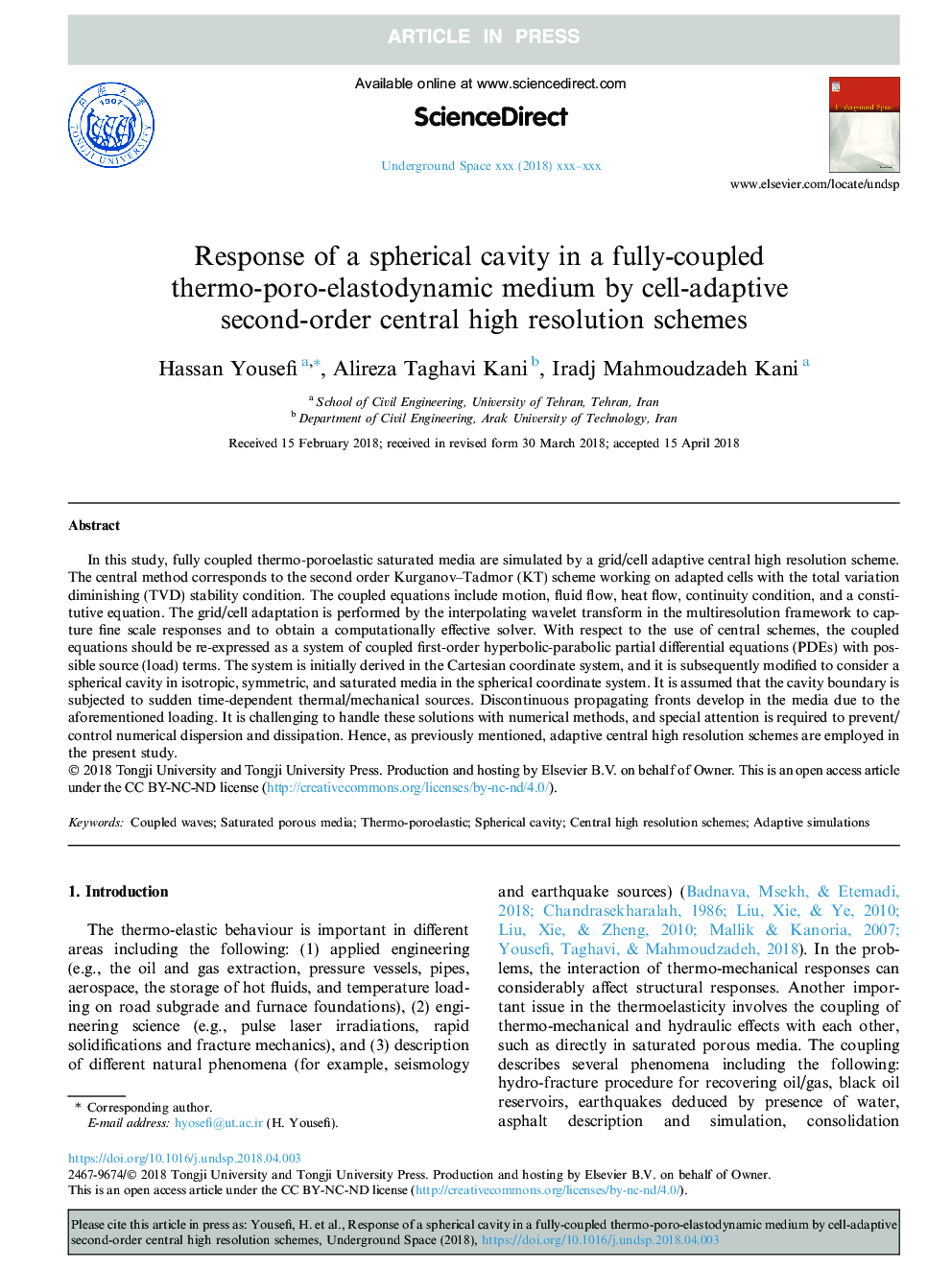| Article ID | Journal | Published Year | Pages | File Type |
|---|---|---|---|---|
| 10225472 | Underground Space | 2018 | 12 Pages |
Abstract
In this study, fully coupled thermo-poroelastic saturated media are simulated by a grid/cell adaptive central high resolution scheme. The central method corresponds to the second order Kurganov-Tadmor (KT) scheme working on adapted cells with the total variation diminishing (TVD) stability condition. The coupled equations include motion, fluid flow, heat flow, continuity condition, and a constitutive equation. The grid/cell adaptation is performed by the interpolating wavelet transform in the multiresolution framework to capture fine scale responses and to obtain a computationally effective solver. With respect to the use of central schemes, the coupled equations should be re-expressed as a system of coupled first-order hyperbolic-parabolic partial differential equations (PDEs) with possible source (load) terms. The system is initially derived in the Cartesian coordinate system, and it is subsequently modified to consider a spherical cavity in isotropic, symmetric, and saturated media in the spherical coordinate system. It is assumed that the cavity boundary is subjected to sudden time-dependent thermal/mechanical sources. Discontinuous propagating fronts develop in the media due to the aforementioned loading. It is challenging to handle these solutions with numerical methods, and special attention is required to prevent/control numerical dispersion and dissipation. Hence, as previously mentioned, adaptive central high resolution schemes are employed in the present study.
Related Topics
Physical Sciences and Engineering
Earth and Planetary Sciences
Geotechnical Engineering and Engineering Geology
Authors
Hassan Yousefi, Alireza Taghavi Kani, Iradj Mahmoudzadeh Kani,
